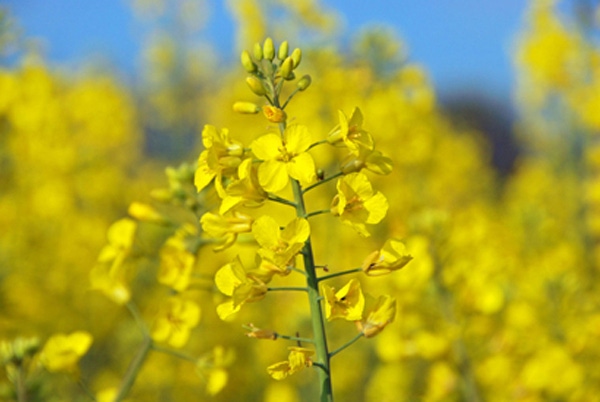March 11, 2011

Joshua Bushong, Oklahoma State University Extension winter canola specialist, says the 2011 winter canola crop is doing well throughout the state. "Despite some adverse soil moisture conditions at planting, continued drought in some parts of the state this fall and winter and subzero cold snaps, the vast majority of the canola acreage is still looking very promising," he said.
"Southwest Oklahoma is still dry in most places. Northwest Oklahoma is mostly dry and Central Oklahoma has close to normal soil moisture. Most farmers have finished topdressing their canola, which is good to do before spring green-up.
"Canola farmers need to be scouting fields closely for insects; army cutworms, diamond back moth larva and aphids are the main three. They should also look for weeds,” he said. “Herbicides must be applied before the canola starts to bolt, which generally occurs during mid to late March."
Most farmers who sprayed canola fields with an insecticide last fall took care of their worm problems, Bushong said. Most of the diamondback moth larvae and army cutworms infest canola fields during late fall. Cutworms often go unnoticed until spring when they become large enough to be seen feeding on the leaves above ground. But they can cause crop damage as they feed on the roots during late fall and throughout winter.
During fall and winter, cutworms generally stay in the soil and are very small. Still, they can sever the canola root just below the soil surface and kill the plant. "I found cutworms across the state last winter and I am still finding some this spring in fields that didn't receive an insecticide treatment last fall," he said.
If further applications of insecticide are needed for aphid control after bolting, don't rule out using a ground applicator, he said. Although some plants will be injured by tire tracks, the amount of insect control is generally better than an aerial application due to the greater spray volume.
Adequate insect control can be achieved by an aerial applicator as long as they use at least five gallons per acre spray volume and fly wing tip to wing tip to cover the field without any gaps, he said.
"Historically, we have found insect control is much more critical in drought years and typically is economical," he said. "As we get closer to harvest time, canola farmers need to start thinking about their harvest plan. There are multiple harvest aid options they can choose. They can swath, push or desiccate the crop in a timely harvest to avoid shattering.
“While direct harvesting is often less desirable due to the risk of shattering, it can be a satisfactory method if the canola is harvested in a timely manner to avoid wind and hail storms. If the canola crop has uneven maturity across the field, I would suggest using one of the harvest aid options listed here. Uneven maturity is often seen when there was uneven emergence after planting or when uneven field conditions such as wet and dry spots occurred."
Estimates put 2011 canola plantings in North Texas, Oklahoma and Kansas near 120,000 acres.
Anyone with questions or comments about the canola crop can contact Bushong at [email protected].
You May Also Like




